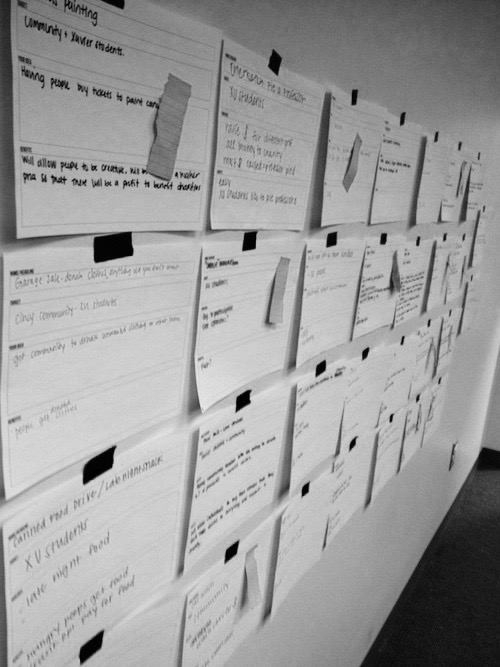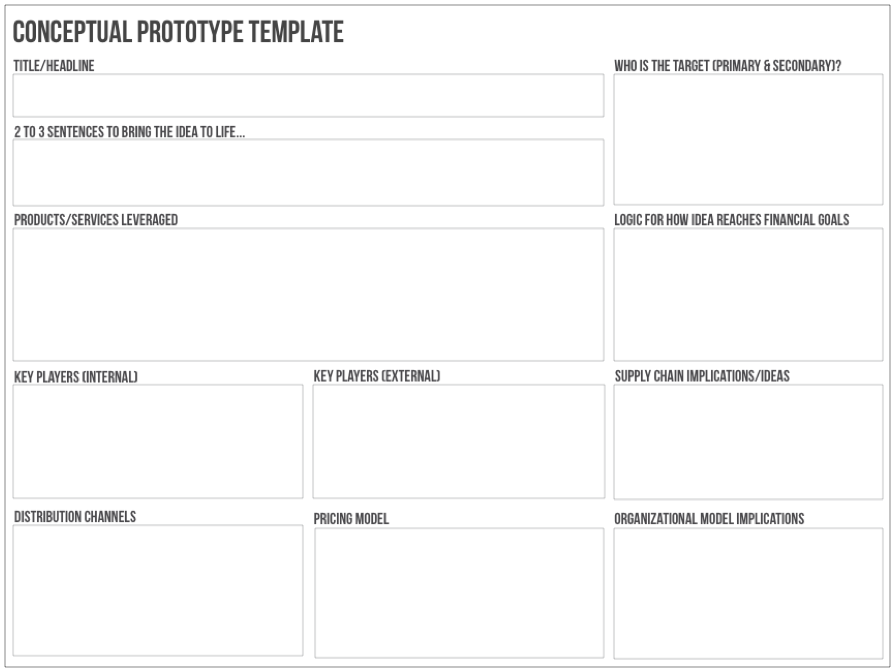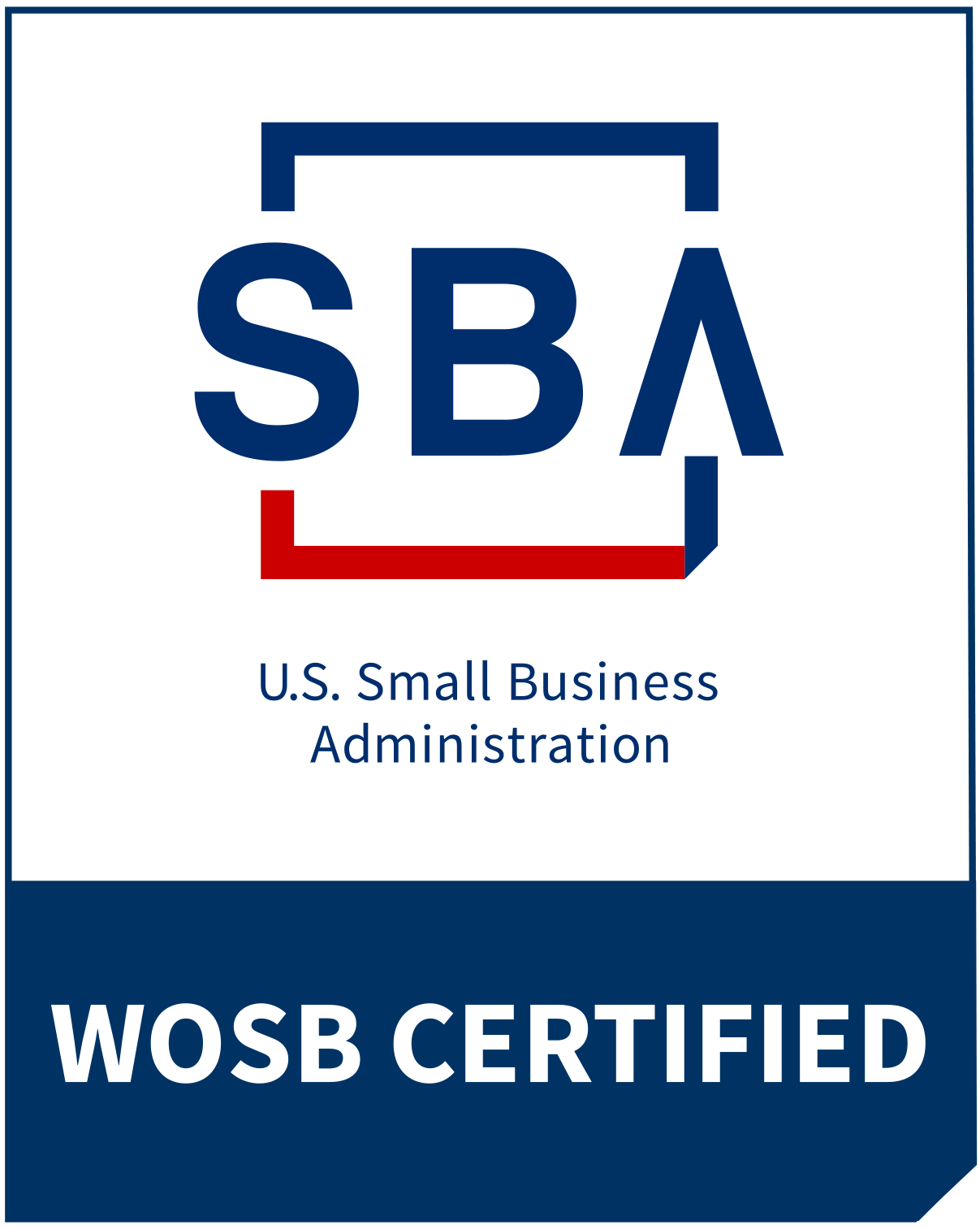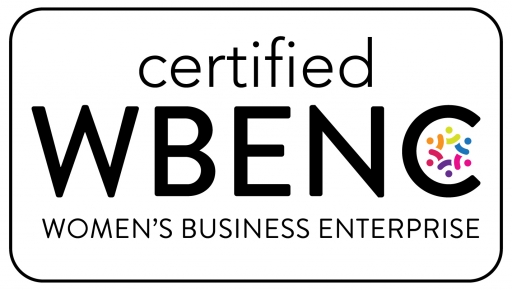Most of the people we know that work in marketing, insights, product development or innovation have participated in more than their fair share of ideation, or brainstorming workshops.
Stacks of post-it notes, sharpies, colorful powerpoint decks full of interesting trends, and playdough, legos and chocolate are often standard order for these workshops, which promise to fill a pipeline with breakthrough new ideas.
And, we often face the challenge of making ideation workshops better — more quality ideas that have more promise to make it to market. In order to make them better, we wanted to focus on a few known problems. Previously, we posted about how often to do ideation.
Here, we’re focusing on the often-too-small-”shape” of ideas coming out of ideation. Here are three simple, yet critical thought starters to make your ideas bigger and better in your next ideation session:
1. Consider a new template. Most ideation or brainstorming sessions we’ve seen use a simple idea template or even a blank post-it note pad to capture ideas. It usually looks something like this:

In fact, we tend to use a simple template like the one above to capture initial ideas, but, given the rich inspiration that is typical of great ideation sessions, it makes sense to build even bigger, more robust ideas. Consider a template that requires a bit more consideration. Here’s an example of a template that we’ve used to take an initial idea and make it bigger by asking “what needs to be true?” to really optimize it for great market potential:
Inspired by Alex Osterwalder’s business model canvas for startup entrepreneurs, it’s essentially, a business model canvas for your ideation output. Some customization is ideal based on your business or customer ideation challenge.
2. Leverage the power of your team. An ideation or brainstorming session is a rare occasion where so many members of a multi-functional team are in the same room for an extended period of time. Teams that build really big ideas take full advantage of the diversity and experience in the room — not just to come up with a quantity of ideas, but to boost the quality of ideas. Using a template like the one we shared above, and a process/activity like the one we will share below brings out the best in a multi-functional and hopefully very diverse (background, experience, expertise) team by giving them the enablers (including analogs) to engage together to build ideas, rather than defend their turf.
3. Throw your best “pitches.” We love to pull inspiration and practice from the world of startups, and the process of “pitching” ideas for investment is one of most underutilized exercises in corporate environments. After developing big ideas using the template above, consider giving sub teams some simple training on “how to do a great pitch” and have them develop a pitch presentation for their top idea or two. As sub teams “pitch” their ideas to other workshop participants, each person can choose which ideas to invest in. We’ve seen this process work well with play money given to participants to “invest”, and with real investment commitments from senior leaders. The time pressure of creating a great pitch, and the focus on how to make the idea attractive to “investors” drives a whole new level of passion, optimization and momentum for ideas.
Incorporating these three simple ideas into your ideation or brainstorming session will make small ideas big, and big ideas even bigger.
The Garage Group teaches and enables corporates to innovate like startups.


